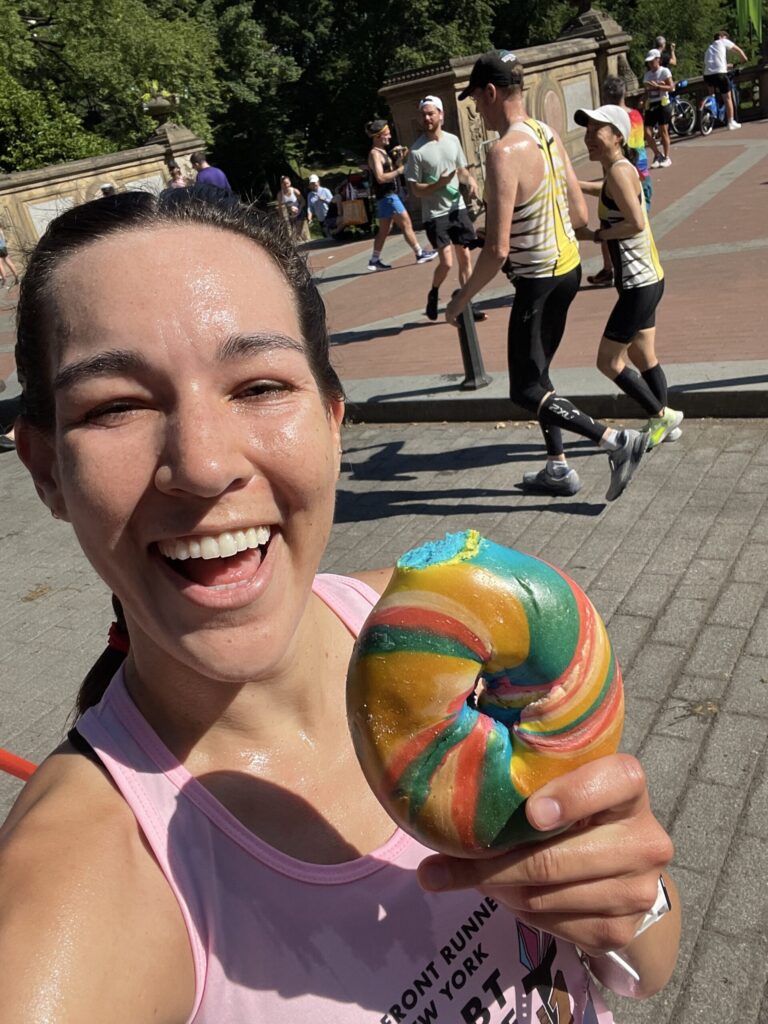
If you’re a runner, cyclist, swimmer or any other endurance athlete, you have probably heard of carbohydrate loading. But have you ever gotten an explanation on the science behind it? Let’s take a deep dive into the benefits of carb loading (with research to prove it!) and what foods and timing are the most effective to help you perform your best on race day.
What is Carb Loading?
Carb loading is defined as an extended period of fueling for a particular endurance event. It originally consisted of a 3 day depletion of carbohydrates with high intensity training, followed by a 3 day loading phase with tapered training and a high carbohydrate intake. However, numerous studies have shown that the benefits of carb loading can still be seen without the need for a depletion phase. Which is great news because that would not fit well into the typical 2-3 week taper! (and because we are NOT about restrictions around here!)

How Do I Carb Load?
So what changes do we actually need to make in our diet to consider it carb loading? The current guidelines recommend 10-12g of carbohydrates per kg of bodyweight. Which is a lot of math. If you’re interested in the specifics, it is definitely something that a Registered Dietitian can help you with! But, for most people, a good rule of thumb is to have carb-dominant snacks and fill half the plate with carbohydrates at meal time. Check out the tips below for how to do so.
How Does it Help?
Now let’s talk benefits! Carb loading increases muscle glycogen, which is energy stored in the muscles. This stored energy can then be used to fuel your body during exercise. So what does this mean for performance? The extra energy stored in your muscles can help postpone fatigue, extend the duration of exercise, maintain high intensity exercise longer, and overall improve endurance.

Downfalls
One downside of carb loading is that if you carb load twice within 48 hours you may not see the same initial benefits. For example, a cyclist on a 3 day tour can maintain performance by continuing to consume a high carb diet, but will not achieve the same level of improved endurance on that 3rd day that they felt on day 1. The high carb diet will help replenish energy stores, and keep the athlete going, so even if the impact on performance is slightly altered, it’s still helpful to keep eating those carbs!
Tips for adding more carbs:
- Add honey or maple syrup to toast, oatmeal or a fruit smoothie
- Drink your carbs: fruit juice, sports/electrolyte drinks, chocolate milk, fruit smoothie (just be sure to keep sipping on water too!)
- Use carbs as a base during meals: pasta or grain bowl, sandwich, homemade pizza etc.
- Focus on carbs for snacks: cereal, toast, granola bars, yogurt with granola
*Remember, carb loading does not mean it’s time to ignore the other food groups! It’s simply time to alter the portion sizes.
